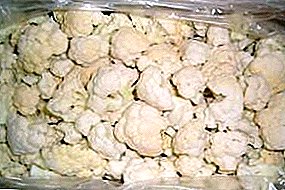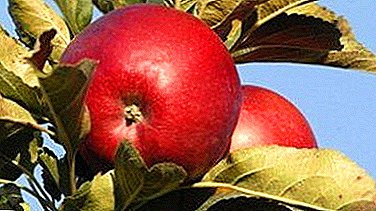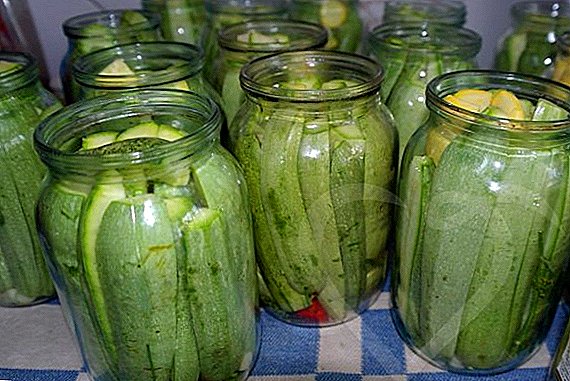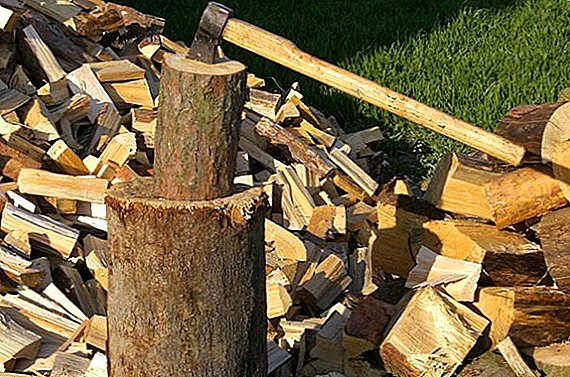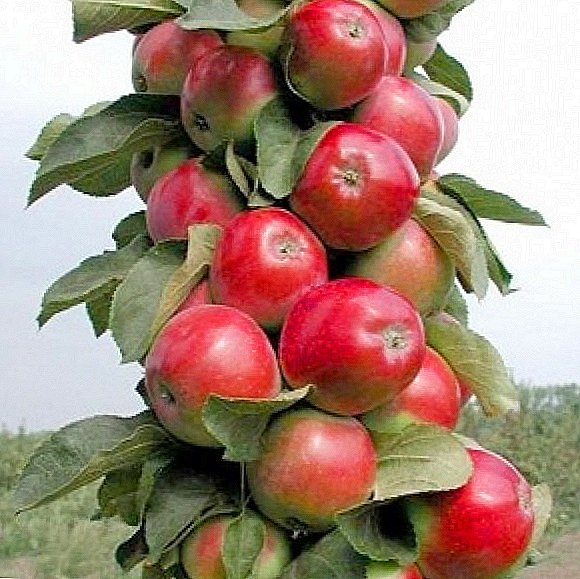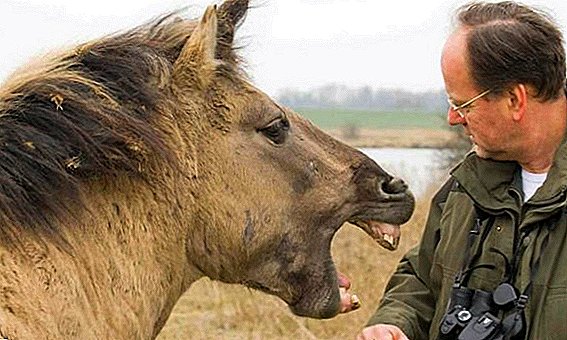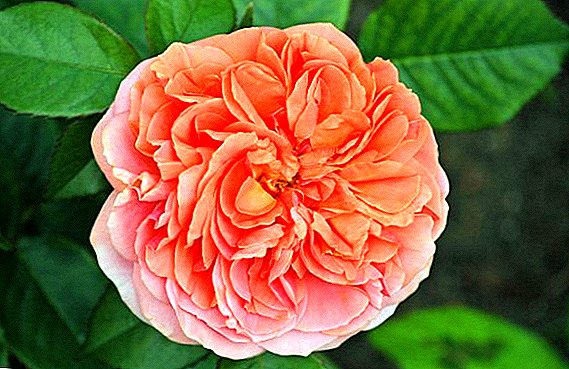 Roses are the undoubted queens of flowers, and the Chippendale variety is a favorite of landscape design. A representative of the variety will decorate your site thanks to a powerful bush covered with many orange flowers, from which it is impossible to look away. Features of cultivation, care and methods of reproduction of this rose will be discussed in the article.
Roses are the undoubted queens of flowers, and the Chippendale variety is a favorite of landscape design. A representative of the variety will decorate your site thanks to a powerful bush covered with many orange flowers, from which it is impossible to look away. Features of cultivation, care and methods of reproduction of this rose will be discussed in the article.
Description
Rose Chippendale is a group of scrubs. She won great popularity among gardeners due to its unpretentiousness and good resistance to diseases. It was created in the classic old style with notes of modernity. The main characteristics of the plant:
- grows a powerful bush, up to 1.2 m in height and up to 1 m in diameter;
- leaves are dark green with gloss;
- flowers cupped in shape, reach 12 cm in diameter. Collected in inflorescences. The number of double petals in one bud reaches 80 pieces. They are painted in rich orange-pink tones. Over time, the color fade to apricot hue. Aroma is delicate and fruity;
- flowering occurs in two waves. The second time it is more abundant than the first. Rose blooms almost all summer and autumn, before the first autumn frosts;
- flowers are good in cutting, stand in a vase for a long time;
- variety withstand frost well;

Did you know? The variety was bred by the German breeding company "Tantau" in 2005 and owes its name to the 19th century furniture master Thomas Chippendale - an ornament in the shape of a rose flower was the hallmark of his works.
Features of growing
Shrubs of this variety grow beautifully in group plantings, and alone. For effective flowering it is better to choose a sunny place without drafts and strong winds.
Rose tolerates partial shade, only flowers on the bush will be less. It prefers light soils with low acidity - loams are ideal. If the soil has a lot of clay to create a good moisture and breathability, you need to make sand in the soil.
Roses "Abraham Darby", "William Shakespeare", "Rosarium Utersen", "Graham Thomas" are also attributed to the scrabes.
Landing rules:
- a week before planting, dig a hole 50x50x50 (size depends on the size of the roots), pour water so that it soaks it well;
- Prepare a soil mixture from 2 parts of the soil and 1 part of the humus. In the resulting mixture add fertilizer for roses (sold in the store);
- soak the roots of the plant in water for 24 hours;
- pour a layer of drainage to the bottom of the pit, which will allow not to stagnate with excess moisture - respectively, and the roots will not rot;
- put a part of the prepared soil on the drainage layer with a hillock;

- To inspect the planted bush, cut the long roots to 30 cm, leave three well-developed stems (cut the rest). Stalks pruned, leaving three to five buds;
- plant in the hole, the roots are well decomposed, so there was no creases. Cover it with earth, gently ramming it, and at this time the bush should be pulled up a little to completely remove the air pockets. According to the diameter of the landing pit, make an earthen roller for watering;
- plentifully shed the planted plant and grind the soil with peat to preserve moisture for a long time. While the plant is well rooted and grows, you need to water often and in large quantities. This procedure also depends on weather conditions.
Important! The grafting site should be underground at a depth of 5 cm. If the plant is derived from a cutting, then it can be planted deeper.It is necessary to plant a rose in spring, when the night frosts are past, and the earth warms up well. Depending on the landing region, this may be April and May.
Care
Rules for the care of the rose planted: 
Learn more about planting, cutting, fertilizing, preparing roses for winter.
- abundant watering once a week - up to 10 liters of water under a bush;
- loosening the soil around the bush and removing excess seedlings;
- fertilizing should be carried out more than once per season. In the spring mineral nitrogen fertilizers are applied. The same dressing is carried out in the period of budding. At the end of summer or early autumn, phosphorus-potassium fertilizers are introduced under the bushes;
- Pruning bush is carried out twice - in spring and autumn. Spring operation is carried out before bud break. Pruned damaged, thin, diseased shoots and spend the formation of the bush - 1/3 shoots are cut by one-third of the annual shoots, two-year branches are cut by five buds, growths - by 2 buds. Autumn operation prepares the plant for wintering. Unripe shoots, damaged and diseased, are cut, flowers that have dried, and leaves that are not fallen are removed;
- Before sheltering for the winter, the plant should be fed with a strengthening composition. 25 grams of superphosphate, 10 grams of potassium sulfate, and 2.5 grams of boric acid are taken per 10 liters of water. This solution is poured over a rose in August. At the beginning of September, another fertilizing is carried out, consisting of 15 g of superphosphate and potassium monophosphate, which dissolve in a bucket of water;
- with the onset of frost spend shelter roses. Bushes pile up to a height of 35 cm, manure or rotted leaves are laid out between the rows. Fir branches, straw, and burlap are used as covering materials.

Did you know? In 2008 and 2013 in Austrian Vienna, the Chippendale variety rose was awarded the prestigious “Most Fragrant Rose” award.
Diseases
The variety Chippendale is highly resistant to diseases. They can arise and develop against the background of a long period of high humidity and at the same time of low temperature. If the plant is weakened after winter, it was not fed in time, there is a high probability of being affected by such infectious diseases:
Learn more about the diseases and pests of roses.
- Rust occurs in the spring, when it is still cool, and by the summer it can hit the whole plant. To notice this disease is possible for small orange patches on the foliage. The fungus is destroyed if the Bordeaux fluid is treated in time. If this is not done, the spots will gradually become black, and the foliage will begin to crumble, and the stems will shrink. To prevent rust before bud break, a 1.5% solution of ferrous sulfate should be used to treat the plant and the soil around it.
- Infectious burn It appears due to the early shelter of the rose for the winter. Warm weather creates the preconditions for the rotting of the shoots and the defeat of the fungus. Branches form brown spots that increase in size and completely affect the stems. They must be completely cut and processed bush "Fitoverm". For prevention, it is necessary to spray the plant with a 1.5% solution of iron sulphate before the shelter.

- Perinospora, or downy mildew, develops in periods of cold and wet weather or a sharp temperature drop during the day and at night. Brown spots are formed on the leaves, the plant slows down growth, the buds do not develop. Roses should be sprayed during the growing season with a solution of boric acid (10 g of acid per 10 liters of water) or with ready-made copper-containing preparations - Ridomil Gold, Ditan M-45.
- Gray rot is determined by the presence of a yellow-brown gun on the leaves and indicates that the rose receives less potassium and magnesium. It is necessary to feed fertilizers with mineral fertilizers and spray the shrub with "Fundazol" or "Prognosis".
Important! Phosphorus-potassium fertilizers applied in time help the development of good shrubs and, accordingly, increase the plant immunity to diseases.Rose can suffer from pests:
- spider mite may appear in hot time with insufficient watering. Yellow specks appear on the leaves, they lose their green color and dry out, and white cobweb appears on the stems. The bush should be well watered with water under pressure from a hose and treated with "Fitoverm" or "Aktar" three times with an interval of 6 days;
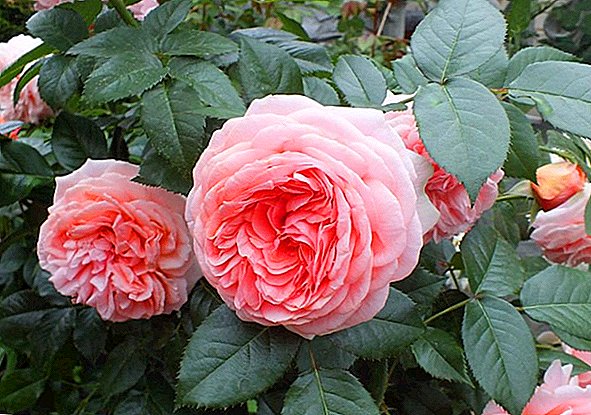
- rosian moth feeds on the sap of the leaves, making them curl, and the bush loses its decorativeness. The foliage needs to be torn off and be sure to burn, because inside the tube there is a caterpillar of a moth. Then the rose should be treated with insecticides "Aktara", "Confidor" with a break of two weeks;
- green aphid located under the foliage, on the young shoots, and feeds on their juice. Places of aphids spread are covered with a sticky coating and are deformed. The bush should be washed with soapy water and sprayed with "Commander", "Alatar", which give protection for 20 days. Treatment should be carried out as aphid colonies occur;
- Rosan sawflies there are two types: descending - affect the leaves; ascending - gnaw shoots from the inside. Damaged shoots are cut and burned. If the leaves have few caterpillars, they can be assembled by hand. When a large number of sawfly is washed with water from a hose, and then the plant is treated with the preparations “Inta-vir”, “Alatar” with a break of 20 days;
- rosewood cicadas leaves covered with white spots, then they become marble. The greatest effect is given by processing "Aktaroy" several times with an interval of 2-3 weeks.
Important! Marigolds planted next to roses scare pests.

Breeding methods
The plant can be propagated in two ways.
Learn how to plant a rose on a dog rose, how to grow a rose from a bouquet, how to care for a rose in a pot, how to cut the roses.Cuttings held in the summer, and for the procedure is taken just ottsyvshy escape. The sequence of the processes:
- The selected shoot is cut into segments of 15-20 cm (there should be 5 leaves). The lower cut is made at an angle as close as possible to the leaf stalk.
- Place for landing should be in the penumbra. Dig bed with the introduction of humus.
- On the prepared cuttings, 3 lower leaves are removed, and planting in the soil is carried out under an inclination. The cuttings are deepened to the remaining leaf.
- The bed is plentifully watered and covered with a transparent film to create a greenhouse effect.
 Rooting by the layers need to do in the spring, when sap flow began. It is necessary to do the following operations:
Rooting by the layers need to do in the spring, when sap flow began. It is necessary to do the following operations:- To dig a shallow ditch near the bush.
- In her lower strong side escape and prikopat it. Previously, in several places you need to gently scrape the bark, for rapid germination of the roots. The tip of the shoot does not drop.
- The buried escape must be fixed for rigidity with staples.
- Water regularly to prevent the ground from drying out. Appearing buds at the top must be cut off.
Learn how to preserve freshness, how to make aromatic wine from petals, how to dry roses.
Rose varieties "Chippendale" unpretentious care and will be a great addition to your garden. Properly planted on the site, it will give you not only the full beauty of its flowers, but also their amazing aroma.




